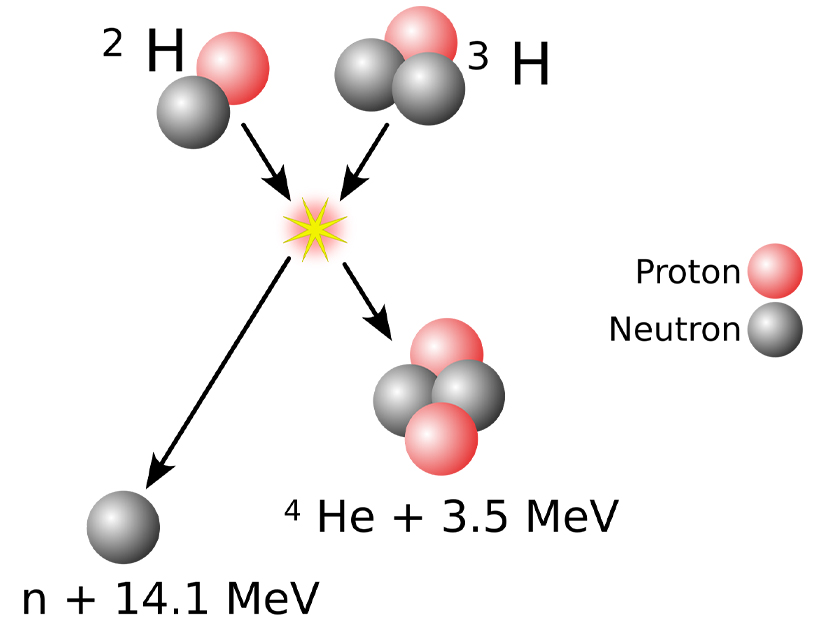2024 is the 35th anniversary of the discovery of cold fusion!
OK, just kidding.
Back to reality: Renewable resources generally are not dispatchable. We are searching high and low for an economic solution to this problem because dispatchable resources like coal and natural gas emit carbon.
Certainly it is wise to maintain existing nuclear plants, as I urged long before it became fashionable. But other resources remain highly problematic.
New nuclear fission, such as small modular reactors, has a very high cost. Although a recent Atlantic article says we should take a leap of faith because failure is not an option (citing the siting challenges of large wind, solar and transmission), hope is not a plan.
Long-duration battery storage is extremely costly, as I discussed in my most recent column. Green hydrogen electricity is a pipe dream (no pun intended), as I discussed before.
The Fusion Revival
Fusion is getting increasing attention as a possible salvation.
I’m here to tell you that commercial fusion is another fantasy.
The old saying is that commercial fusion is 30 years away and always will be.1 An Oak Ridge director of fusion energy research said at a conference: “The projected time to realize the ultimate goal of commercial fusion always seems to be 25 or 30 years away.” He said that in 1986 — 38 years ago. So even then it was a cliché.
‘Net Energy’
But the hoopla continues, most recently about “net energy” being generated in fusion tests (for example).
Two things about such tests that don’t get reported in the media: first, that the amount of energy generated is trivial. The most energy generated in a fusion test, at the U.K.’s Joint European Torus (JET), is 69 megajoules. That sounds like a lot, but it is the equivalent of 19 kWh. Basically, it could power one American household for about two days. (The monthly average is 900 kWh.)
Second, this isn’t really net energy. When the JET was running, it consumed 700 to 800 MW (yes, megawatts).
As for the 3.88 megajoules generated at the U.S. National Ignition Facility, the claim is made of “net energy” because 3.88 megajoules generated are more than 2.05 megajoules “delivered to the target.” The net of 1.83 megajoules would power a 100-W lightbulb for all of five hours.
But more importantly, this formulation ignores the 322 megajoules it took to power the 192 lasers to “deliver” the 2.05 megajoules.2 It’s not “net energy” — it’s negative energy. The ratio of energy consumed to energy generated is about 83 to 1.
Reality Check from a Retired Nuclear Fusion Physicist
Part of the problem with fusion is that we’ve spent $100 billion on it, and thereby created an industry dependent on huge taxpayer subsidies and on hoopla to keep those subsidies coming. Experts not dependent one way or another on the public’s money are few and far between.
But I did find this sobering analysis by a nuclear fusion physicist who worked on nuclear fusion experiments for 25 years at the Princeton Plasma Physics Lab in New Jersey, and who is … retired.3 Here are some of his key points:
-
- huge parasitic power consumption
- tritium fuel not fully replenished
- radiation damage and radioactie waste
- nuclear weapons proliferation
- outsized operating costs.
His follow-up article focused on the colossal International Thermonuclear Experimental Reactor (ITER) in France, originally scheduled to test its “first plasma” in 2020 and achieve full fusion by 2023. However, the schedule was pushed back to test first plasma in 2025 and achieve full fusion in 2035, and now the schedule is … nobody knows. The ITER has been portrayed repeatedly as using 50 MW to generate 500 MW, but the reality is that it will use 300 MW to generate 0 MW of electric energy.
If, after reading his analyses, you still think there’s a realistic future for commercial fusion, then I admire your optimism. And there are three dozen fusion startups that might welcome your investment dollars.
Path Forward
The fact remains we have no realistic, affordable way to maintain resource adequacy in a net-zero future other than to keep a fleet of natural gas plants around that can be dispatched as needed — maybe not many hours a year, but enough. This will vary across regions. And they’ll have to be compensated to be available and flexible as needed. In the organized markets, they’ll have to get meaningful capacity payments to stick around. In the cost-of-service states, they’ll have to get regulated compensation. The carbon emissions of the gas plants can be offset/captured as different states deem worthwhile.
This is not rocket science.
Speaking of rocket science, let me repeat from a couple recent columns4 that regardless of what we might do here and in Europe, humanity as a whole is gonna need Plan B: solar geoengineering. There is no realistic alternative, at least for the near and medium terms (until perhaps those 30 years for commercial fusion to become reality).
“We all have to take a chance. Especially if one is all you have.” — Capt. James T. Kirk, “Tomorrow Is Yesterday,” 1967.
Columnist Steve Huntoon, principal of Energy Counsel LLP, and a former president of the Energy Bar Association, has been practicing energy law for more than 30 years.
1 A collection of articles about fusion spanning decades as published by the Bulletin of the Atomic Scientists is here: https://thebulletin.org/collections/fusion-energy/
2 https://www.scientificamerican.com/article/nuclear-fusion-lab-achieves-ignition-what-does-it-mean/ (“NIF’s 192 lasers consumed 322 megajoules of energy in the process.”)
https://pubs.aip.org/physicstoday/online/42581/National-Ignition-Facility-earns-its-name-for-a https://www.vice.com/en/article/xgwpkk/jet-reactor-fusion-energy-record-setting-breakthrough
3 https://thebulletin.org/2017/04/fusion-reactors-not-what-theyre-cracked-up-to-be/#post-heading. An interesting and very readable anonymous posting by an electrical engineer in the industry is here, https://www.reddit.com/r/fusion/comments/10buldl/what_are_the_biggest_hurdles_facing_companies/
4 https://energy-counsel.com/wp-content/uploads/2023/08/World-of-Hurt.pdf; https://energy-counsel.com/wpcontent/uploads/2022/05/We-are-Going-to-Need-a-Plan-B-RTO-Insider-5-10-22.pdf A recent Economist article on the Antarctic ice melt also sounds the alarm, https://www.economist.com/interactive/science-andtechnology/2024/03/27/antarctica-earths-largest-refrigerator-is-defrosting



